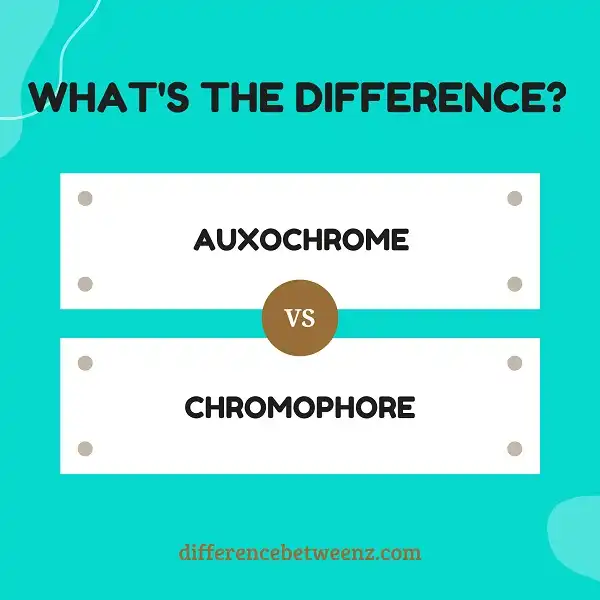Auxochrome and chromophore are two words you may have heard before, but do you know what they mean? In this post, we’ll explain the difference between these two types of molecules, and show how they create colors in paints and other materials. We’ll also discuss some of the practical applications of auxochromes and chromophores in everyday life. So if you’re curious about this topic, read on!
What is Auxochrome?
An auxochrome is a chromophore that can donate or accept an electron pair. This gives them the ability to change the color of a compound. Althoughauxochromes are not essential for coloration, they can intensify or modulate hues.
- Many natural dyes, such as anthocyanins, flavonoids, and carotenoids, contain auxochromes. These molecules are also responsible for the colors of many synthetic dyes, such as azo dyes and Disperse dyes.
- Auxochromes typically contain nitrogen and have basic properties. They are often part of larger aromatic systems, such as phenols, amines, and imines. Because of their electron-donating properties, they can increase the wavelength of light absorbed by a chromophore.
- This causes a shift in the compound’s absorption maxima to longer wavelengths, resulting in a color change. For example, adding an auxochrome to a reddish pigment will cause it to appear more purple.
What is Chromophore?
A chromophore is a molecule or ion that absorbs light of a specific wavelength In other words, it is the part of a molecule that is responsible for its color. The chromophore is typically an aromatic ring, such as a pyridine ring, or a conjugated system of double bonds However, non-aromatic chromophores are also known. The word “chromophore” comes from the Greek words for “color” and “bearing.” Chromophores are found in many biological molecules For example, the heme group in hemoglobin is a chromophore Other examples include bilirubin and melanin. Chromophores also play an important role in many industrial and technological applications For instance, they are used in lasers and fluorescent lights. Chromophores are also used as sensors For example, they can be used to detect heavy metal ions in water.
Difference between Auxochrome and Chromophore
- Auxochromes and chromophores are both groups of atoms that contribute to the color of a molecule. The difference between auxochromes and chromophores is that auxochromes are groups of atoms that can shift the absorption spectrum of a molecule without themselves being chromophores, while chromophores are groups of atoms that directly absorb visible light. Simply put, auxochromes modify the absorption spectrum of a molecule, while chromophores absorb visible light.
- One example of an auxochromeis the group -OH, which is present in many organic molecules. The -OH group can interact with the chromophore to shift the absorption spectrum.
- In contrast, one example of a chromophore is the benzene ring, which absorbs light in the UV-visible range. In short, auxochromes are non-chromophoric groups that can shift the absorption spectrum of a molecule, while chromophores are groups of atoms that absorb visible light.
Conclusion
In closing, we would like to leave you with a few key takeaways about auxochromes and chromophores. First, auxochromes are molecules that attach to a chromophore in order to change its color. Second, the presence of an auxochrome can either intensify or mute the color of a chromophore. Finally, not all colors are created equal – some colors are more intense than others due to their wavelength. By understanding these concepts, you can create more vibrant and eye-catching visuals for your website or marketing materials.


